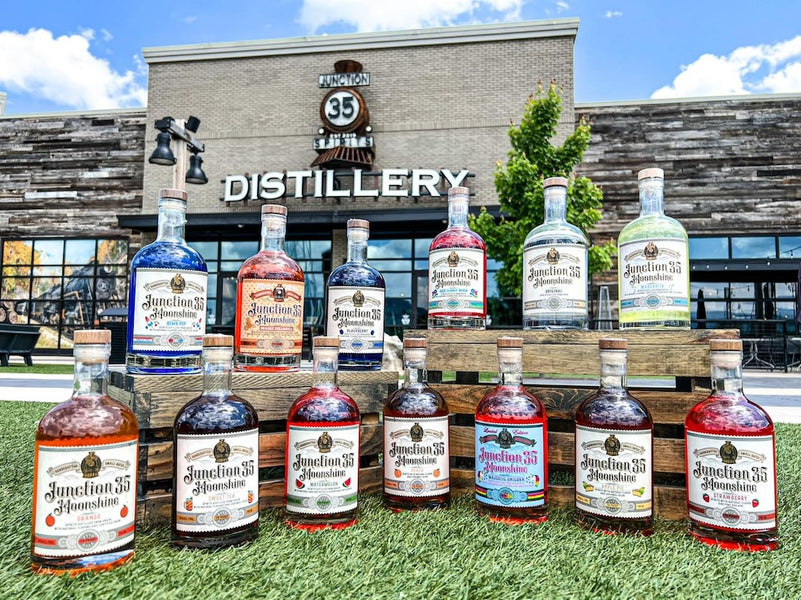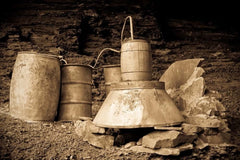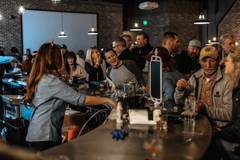
Shine 101: The Unique History of Moonshine in the Smokies
White lightning, mountain dew, hooch, firewater or simply, shine. There’s a reason moonshine has a number of nicknames; the deliciousness is hard to describe and even harder to replicate! For generations, it’s been a tradition in the Smoky Mountains to produce high-quality moonshine whiskey through a unique knowledge only a handful have. Continue reading as we delve deeper into the unique history of moonshine in the Smokies:
The Origins of Moonshine

The term “moonshine” was first used in the late 15th century, but it wasn’t until the 18th century in England that it was used to refer to this particular type of liquor. Today's moonshine formula is simple: corn, sugar and water. The execution? Not so easy.
Liquor makers in places like Scotland and Ireland would make a barley mash to produce their moonshine. Eventually folks from these Celtic countries migrated to Appalachia, where they would continue to distill these moonshine whiskeys for their new community to enjoy.
American-made moonshine made from maize corn mash dates back to 1791 in Pennsylvania when an American government in its infancy began placing taxes on spirits. That only angered the farmers who produced liquor across the state as they could no longer afford to make moonshine. Protests ensued and in 1802 the government lifted these taxes.
Moonshiners Fight Back
Smoky Mountain moonshiners would make these whiskeys for decades until the federal government began enacting a $2 per gallon tax on whiskey. What amounted to a 20 cent tax increase proved costly, so they decided to stop paying it, marking an ever important moment in the history of moonshine.
Because of this, many of the farmers who produced liquor were now faced with avoiding law enforcement detection as they would continue their operations with demand still thriving. In fact, the term “moonshine” originates from the days of illegal whiskey being distilled at night, under the light of the moon.
Moonshine became an invaluable revenue stream for these cash-strapped farmers. By turning extra corn into moonshine, it became easier to move, buy, sell and trade, helping families to pay for their bills.
Smoky Mountain moonshine was often made in spots like Wears Valley, Cosby, Pittman Center and English Mountain. Moonshiners even took their operations underground at Forbidden Caverns in Sevierville. This underground cave in a remote area provided cover and a flowing supply of water. If you visit Forbidden Caverns today, you can still see an old moonshine still during the tour!
Junction 35 Opens its Doors

Junction 35 Spirits is proud to carry on this Smoky Mountain tradition at our distilleries in Pigeon Forge and Sevierville! Producing high-quality spirits full of authentic flavor is what we do! Crafted by liquor makers with a wealth of experience, we offer more than a dozen different flavors of moonshine with options like Peach, Apple Pie and Banana Pudding.
Liquor isn’t all you’ll love about Junction 35. We’re Tennessee’s first distillery AND restaurant! Savor a home-cooked meal with options ranging from slow-cooked BBQ to burgers, chicken, seafood and more. Enjoy your meal with one of our signature handcrafted cocktails, made from our finest liquors, for the ultimate experience.
You’re all up to speed on the unique history of moonshine in the Smoky Mountains. Now it’s time to come give it a try! Take a look at the complete list of moonshines and numerous other spirits at Junction 35.



